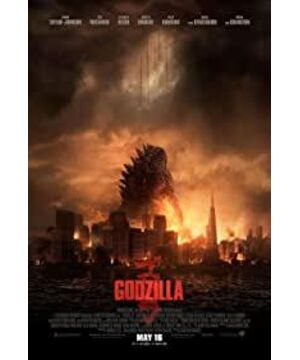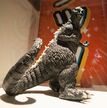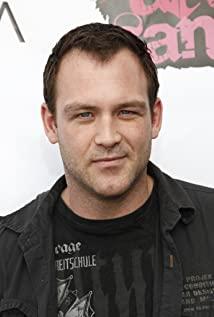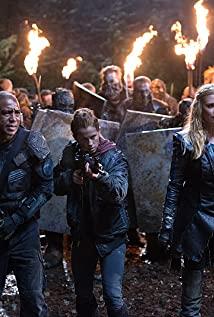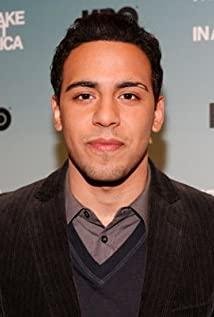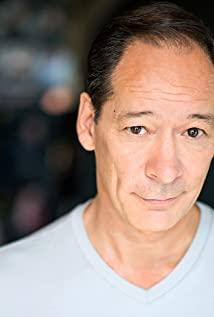In order to condemn Emmerich’s unscrupulous copycat behavior under the banner of genuine Godzilla, in the last movie of the real Godzilla-Godzilla: Ultimate Battle, Zilla played as the first boss, and Was blown up by the real Godzilla. The most funny thing is that in that movie, there is another harlequin named Emmerich, who was finally trampled to death by Zilla! Extremely ironic, sarcastic and ridiculous! A breath of anger for the majority of Godzilla lovers!
Speaking of this film, this is the 60th anniversary commemorative work of the Godzilla series. Although it is claimed to be adapted from the 1954 version of Godzilla (the year number 1954 is indeed mentioned many times in the movie), we can see the series in the movie. Many classic bridge sections and symbols in the. The author can safely tell everyone that this is a genuine Godzilla, no copycats, perfect restoration!
This article is here to explain a few important Godzilla symbols in this film. If there are fans like the author, please point out the errors and omissions in the article!
1. Nuclear testing. The classic Godzilla was born in the Pacific Nuclear Test, so the early Godzilla movies contained deep nuclear reflections, and extended from nuclear bombs to all super weapons, such as the Oxygen Destroyer in the first movie. The movie shows the protagonist’s That weapon should be used to deal with Godzilla's complicated mentality. However, this film will completely reverse the setting. The film interprets the nuclear test in the Pacific as a nuclear explosion to eliminate Godzilla, and it only claims to be a nuclear test. However, in this film, when the US military tried to destroy the monster with a nuclear bomb, the doctor played by Ken Watanabe took out the pocket watch of his father who died in the atomic bombing of Hiroshima to warn the admiral of the navy. This detail reflects the small nuclear reflection of the film, which is a tribute to the 1954 version of Godzilla.
2. Nuclear power plant. Godzilla mutates due to absorbing radiation energy, so it will be attracted by radiation energy and feed on nuclear radiation. The specific manifestation in the classic Godzilla is nucleotaxis, that is, he will actively search for nuclear power plants and smoke. Nuclear radiation. However, in this film, the film puts this characteristic on Godzilla's enemy MUTO.
3. Godzilla's abilities. Must introduce Godzilla's classic abilities to everyone! Fans and friends who have seen the classic Godzilla can easily name Godzilla's signature skills: physical combat skills, tail whip, radiation hotline, and lightning shields that appear in individual episodes. Physical fighting skills are mainly used in the first contact with other monsters, including hugs, bites, throat locks, kicks, etc., which are common moves in Japanese martial arts. Tail whip is one of Godzilla's important skills, his long tail is definitely not as simple as decoration. In fact, the destructive power of Godzilla's tail waving is very huge. The most important move is the radiation hotline. This move comes from the radiation energy in Godzilla's body. It is his most important, coolest and most destructive ultimate move. The sign of this move is Godzilla’s back. The nail plate generates blue light energy, and then he uses his mouth to eject a blue energy beam. And when Godzilla goes wild and the inner core reaction is intensified, this move will increase exponentially and produce new colors and forms.
4. Godzilla's battle. The enemies in this film are a pair of insects, MUTO, and their attack methods are a bit similar to the giant praying mantis in the 1967 Godzilla movie-Son of Godzilla. The author has always wondered whether this film has borrowed from the action design of that movie. For example, MUTO mainly uses sickle-like front paws to attack Godzilla’s head and neck when attacking Godzilla. MUTO also uses jumping and flying to strengthen the attack power. Godzilla uses lock throat and foot pedals. , Overthrow the physical attack to deal with. During the battle, when Godzilla's back began to turn blue, I was thrilled. This is the perfect CG presentation of Godzilla's ultimate ultimate! In the end, two enemies were defeated, one was a tail whip sweep, the other was a radiant heat shot into the enemy's mouth and finally pulled off the head. Godzilla's tremendous destructive power can be seen from the tragedy of San Francisco after the war. Ah, it's finally not the disaster of New York or Chicago's ruined city!
The sound of this movie is superb, Godzilla's roar is deafening, frightening, and adrenaline surges. The soundtrack of the movie can be described as a scream. It is obvious that it is imitating and adapting the classic soundtrack of the classic Godzilla movie, giving people a sense of suppressed fear. In particular, the integration of Japanese music elements reminds everyone of the origin of Godzilla's birth.
However, the author always cares a little about the setting of Godzilla's identity in this film. The classic Godzilla movie has three periods-Showa, Heisei and Millennium. Among them, in the middle and late stages of the Showa series, Godzilla became a "good" behemoth, at least the guardian of the earth. At other times, Godzilla is a pure destroyer and destroyer. Even since the Heisei period, the entire series has been preventing Godzilla from getting better. However, the identity of Godzilla in this film is like the mid to late Showa series. According to the statement in this film, Godzilla is the guardian of natural balance. The Godzilla in the movie does not take the initiative to attack humans and does not carry out unnecessary destruction. There is even a scene where the author doubts whether he is really saving the hero. At the end of the movie, Godzilla rises from the ground and screams up to the sky, making the author think that he has seen a god. Maybe this Godzilla series is to make Godzilla the patron saint of the earth and mankind!
Finally, for the Godzilla series of movies, or for the monster movies, I have been thinking about a question, whether the talent is the subject of the movie or the monster is the subject. If the monster is the main body of the movie, it can directly represent the battle and destruction of the monster, even without the existence of human characters.
For the Godzilla series, director Honda Inoshiro, who created the Godzilla series's signature and name, laid the "human-oriented" tone for the series, and this tone influenced most of the 28 Godzilla movies. , Especially the Showa series. Humans are always the core of monster movies. The existence of monsters is just to create an environment of ruin and destruction, creating an environment of chaos and suppressing fear, in order to test and observe human reactions and actions in this environment. In other words, it is necessary to highlight the role of humans in monster attacks. Thus formed a routine: the beginning of the movie must be a large-scale telling of human emotions, human stories-maybe a conspiracy, maybe an encounter, maybe an adventure-always have nothing to do with monsters, and then monsters Appearance-as a prop or weapon in a disaster or conspiracy, and finally the monster incident is resolved-the conspiracy is exposed and prevented, emotions are expressed, thoughts are spread, and the theme of the movie is discussed. The monster is just a foil in the whole movie, with fewer scenes and short appearance time. This kind of routine is also applicable in this film.
The film in the eyes of the author is about family and reunion. The protagonist and his father were separated because of their mother's death and his father's persistent pursuit of the truth about the nuclear power plant incident 15 years ago, but when the truth was revealed, the misunderstanding of the father and son was eliminated. Whether it’s the protagonist’s father telling the protagonist to return to his family to protect them from life and death, or the agreement between the protagonist and his wife to reunite, or the little boy that the protagonist accidentally meets in the middle of the movie, or even the two MUTO monsters interacting with each other The summons are all embodying the importance of family members, and all expressing a theme-protecting family members and reunion.
The American army in the movie, like the Japanese Self-Defense Force in the classic Godzilla, plays an active role. The movie fully embodies the power and role of mankind in the face of major disasters!
It can be said that this 2014 version of Godzilla is a perfect tribute to the classics on the occasion of the 60th anniversary of Godzilla! From form to spirit, form and spirit reproduce the true original appearance of the classic Godzilla!
View more about Godzilla reviews


